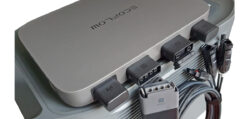
Connect and set up solar panel …
Solar panels are connected by means of so-called MC4 plugs, where you always have to pay attention to correct polarity, because it is DC voltage. Here you can see the two MC-4 plugs that are permanently connected to the foldable solar panel. The MC4 plugs and sockets are reverse polarity protected (and color coded) and are simply plugged in until you hear a click. Fortunately, no MC4 wrench tool is required to disconnect the EcoFlow cables.
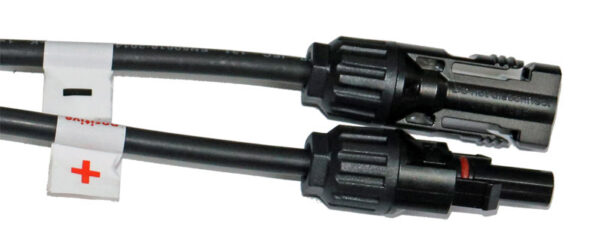
From EcoFlow there is also this MC4 Extended Cable 3M.
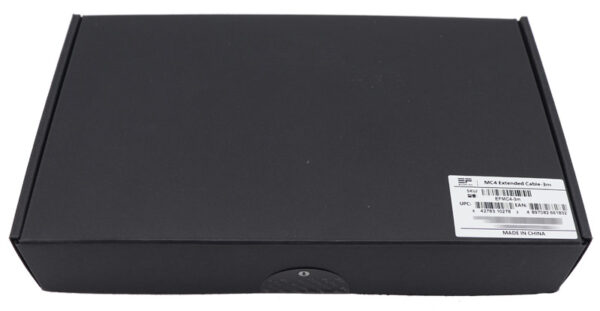
The MC4 solar extension cables are completely black and come in a set of 3 meter cables each.
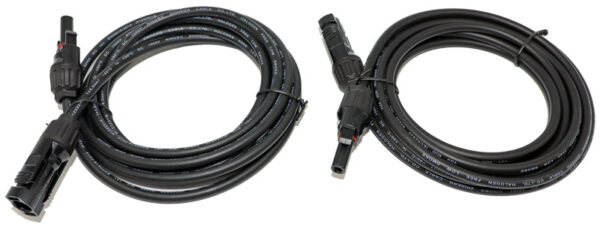
If you do not want to use a PowerStream microinverter and connect the solar panels directly to the Powerstation, you can use an optionally available MC4 to XT60 cable. It is also essential to observe the maximum power specifications of the power station, as you may only connect a certain power.

The flexible solar panels EF-Flex-M100 tested by us offer a nominal power of 100W each, where two of them can be connected in series (2x 2) and two of them in parallel (2x 2+2) on two strings (DC strings), so that you can get a total of 2x 400 watts = 800 watts total power on the PowerStream. When selecting and installing the solar modules, it is important that the 55VDC and 13A are not exceeded. So never connect four EF-Flex-M100 modules in series on one string! We tried it as a test to see if the PowerStream inverter switches off correctly. You get over 71 volts with four EF-Flex-M100 modules in series – the inverter LED turns red and the PowerStream stops working. Only after about 30 seconds of power interruption the PowerStream inverter activates again. So the EF-Flex-M100 flexible solar panels we tested are each connected in pairs to the EcoFlow PowerStream.
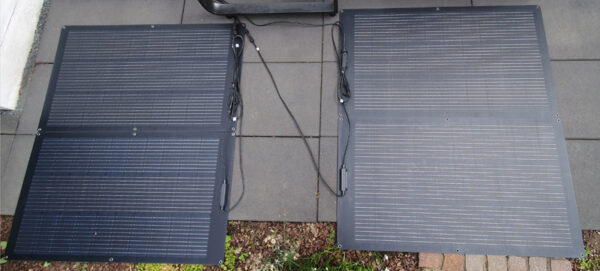
If you ordered the bifacial 220W solar panel from EcoFlow, you have to assemble this mobile solar panel first. The assembly is actually quite simple, but somehow a bit funny. And the mobile solar panel has quite a span of about 183.5cm x 82cm, which you have to tame first, especially since you can not bend the glass reinforced panel, of course, but only folded at the intended places. After that, the solar panel bag is used as a support wall by setting it up as a PV mount with the four carabiners provided.
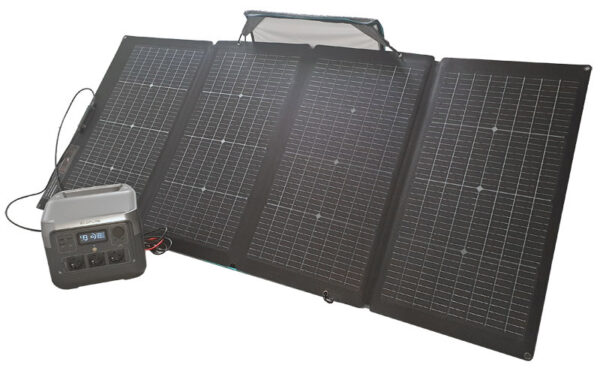
The power station can be placed on the lower support wall for weighting, which also directly protects the power station well. The side with the protruding terminal block should face the sun, whereby the back side can also be used with a bifacial solar panel and the back side still achieves approx. 80% of the power. So you can still capture some ambient light via the back, which would be lost with a single-sided solar panel.
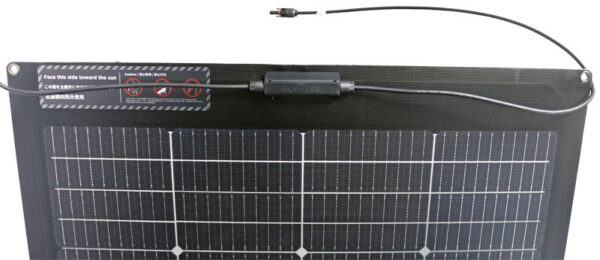
Then the EcoFlow solar panel connector on the back of the power station is plugged into the top of the first XT60 socket on the power station, at least if you are not using a microinverter. The XT60 plug is also reverse polarity protected due to the notches in the plug.
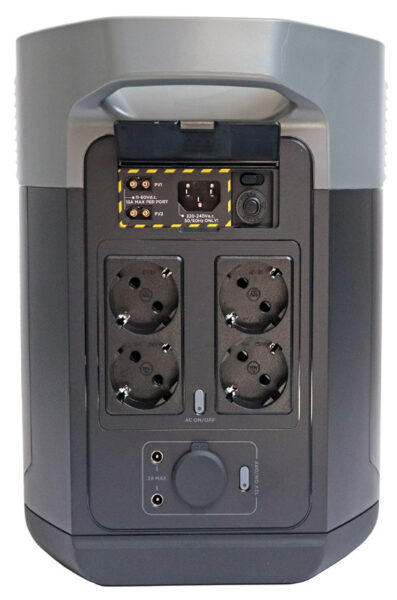
Whether and where exactly to connect the solar modules now depends on the application and the ordered products. Without a PowerStream microinverter, the solar modules are connected to one or two XT60 connectors of the Powerstation to charge the battery. When using a microinverter, it makes more sense to connect the solar modules to the microinverter to feed the power through it to the battery and if it is fully charged, to the house grid. A combination of solar modules at the inverter and at the power station does not make sense in most cases, since not everything will work at the same time anyway and the EcoFlow software is also a bit overwhelming. So before buying, consider what you want to control or charge and then calculate directly whether and how you can connect this solar module power.
Speaking of connecting and charging … you can charge the power station via the IEC cable or via the solar panels, but both at the same time is unfortunately not possible. By the way, the 230 volt AC input is given priority here. So if you plug the power plug of the powerstation into the power socket, it will always charge the powerstation with priority – even if there is solar power at the XT60 socket or even if you could charge the powerstation using solar power via the PowerStream. So disconnect the power plug from the power station if you want to charge via solar power. The power plug of the PowerStream of course remains permanently connected to the house wall.
Now let’s briefly move on to the installation of the switchable sockets.
EcoFlow Smart Plug Installation …
